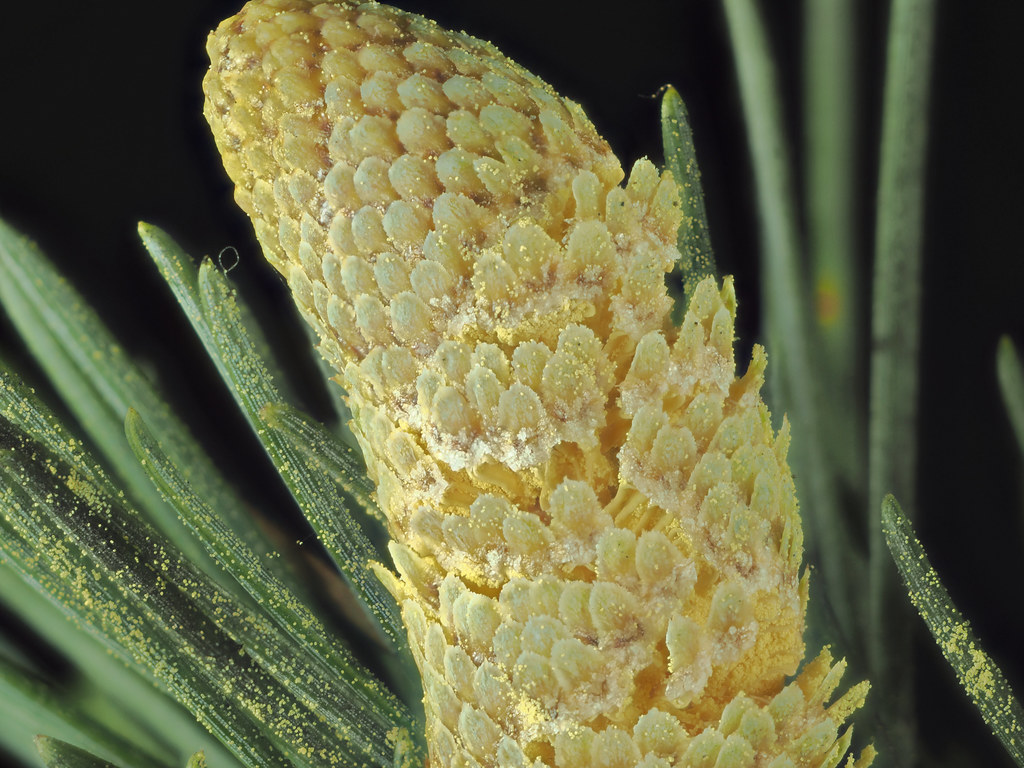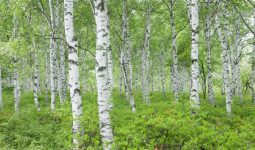There are different types of Cedar trees available worldwide, and this article will discuss some of them.
Cedar trees are a well-known and popular tree species. While there is often confusion between common and botanical names among the different types, there is no denying their beauty and utility.
Cedars have supported us as we’ve evolved, traveled, and built cities. The health, vitality, and opportunities these conifer trees provide continue today.
Cedar trees and cedarwood are used in various applications, including siding, furniture, boat construction, greenhouses, and cigar boxes.
These are the different types of cedar trees available. Let’s proceed.
1. Cedrus Atlantica

The Atlas cedar is native to Morocco, and it, too, has a majestic shape that makes it ideal for parks and extensive gardens.
Cedrus atlantica has an open pyramidal shape with large branches that grow up and out, some large enough to compete with the main trunk.
Adults produce “clouds of leaves,” which can weigh down lower branches. It can easily reach 115 feet (35 meters) in height and occasionally even higher. The trunk is large, with a diameter of up to 7 feet (2.1 meters). It appears to be taller and narrower than Lebanon cedar.
Furthermore, Cedrus atlantica has dark green to glaucous blue needles that grow in rosettes of up to 35. The brown cones rarely grow longer than 3.6 inches (9.0 cm).
Also, the Atlas cedar is an endangered species in its natural habitat on the Atlas Mountain Range, but it has become trendy among gardeners, and several cultivars have been developed.
2. Cedrus Libani
Cedar of Lebanon is a well-known cedar tree variety, distinguished by its distinctive shape and origin in the Eastern Mediterranean region.
It will have a pyramidal shape when it is young, but as it matures, it will become a flat-topped, spreading giant. It is one of the broadest Cedrus species, reaching 60 feet in height (18 meters).
The diameter of the trunk can reach 8.5 feet (2.5 meters). The branching is also unique; these grow outward, forming iconic “clouds” over a large area. The tree’s crown becomes more open as it matures, increasing its landscaping value.
The cones are russet in color and have a 4-inch-long smooch scale (10 cm). The plant will not produce cones until it reaches the age of 40.
Moreover, this tree is distinctive even on a small scale; the needles have four sides, are short (0.4 to 1.1 inch long, or 10cm to 25 cm), and are dark green or glaucous bluish-green. They can spend up to 6 years in the branches.
The Royal Horticultural Society has given it the Award of Garden Merit, arguably the most sought-after cedar tree among gardeners. This is one of the different types of cedar trees.
3. Cedrus Brevifolia
A Cyprus cedar is easily identified because it resembles a fir tree far more than other varieties, but only when young. It comes from the Troodos Mountains on Crete’s well-known East Mediterranean island.
Also, Cedrus brevifolia is closely related to Cedar of Lebanon, where some people mistake them for one another.
It’s smaller than Lebanon or Atlas cedars, reaching only 60 feet (20 meters) tall, and it’s the slowest-growing member of the genus.
Because the overall shape is conical and the branches are short and horizontally spread, it resembles an Abies.
However, this changes as it ages and eventually develops a flat umbrella crown. The blue-green needles range from 0.2 to 0.35 inches (5 to 8 mm).
The cones have a large protuberance and a concave upper part, or apex, and are short, measuring only 2.8 inches (7.0 cm) in length.
Although Cyprus cedar is not a typical garden variety, it retains the imposing beauty of these trees.
4. Cedrus Deodara
Deodar cedar is native to the Himalayas, and it’s easy to spot because it’s a true behemoth, reaching heights of up to 200 feet (60 meters) and a trunk up to 10 feet in diameter (3.0 meters).
It has relatively long needles for this species (up to 7.0 cm, or 2.8 inches, but usually smaller) and grows in rosettes of 20 to 30.
Furthermore, the cones are 2.8 to 5.1 inches long (7.0 to 13 cm), broad and barrel-shaped, and between 2.0 and 3.5 inches (5 to 9 cm). Their color ranges from bright green to glaucous and pale green. The cone has a pyramidal crown that it keeps throughout its life.
Deodar cedar is native to the Himalayas, and it’s easy to spot because it’s a true behemoth, reaching heights of up to 200 feet (60 meters) and a trunk up to 10 feet in diameter (3.0 meters).
It has relatively long needles for this species (up to 7.0 cm, or 2.8 inches, but usually smaller) and grows in rosettes of 20 to 30.
Furthermore, the cones are 2.8 to 5.1 inches long (7.0 to 13 cm), broad, between 2.0 and 3.5 inches (5 to 9 cm), and barrel-shaped.
Also, their color ranges from bright green to glaucous and pale green. It has a pyramidal crown that it keeps throughout its life. This is one of the different types of cedar trees.
5. Cuppressus Nootkantensis
In reality, the Alaskan Yellow Cedar belongs to the cypress family. It has drooping branches and is native to the Northwestern United States.
These characteristics distinguish the tree from other cedar and cypress species. They have scaly leaves that can be prickly, which indicates they are true cedars.
6. Juniperus Bermudiana
This tree, also known as the Bermuda Cedar, is a juniper species that can only be found on the island of Bermuda, hence the name.
This tree covered much of the island before the first settlers cut it down. A scale infestation eventually killed the remaining trees. As a result, it is pretty uncommon nowadays.
Furthermore, when this tree became extinct, it also extinguished various pollinators who relied on it. It’s an excellent example of how human actions can hurt the environment.
7. Juniperus Virginiana
The Eastern Red Cedar is a juniper species, not a cedar (which seems to be mistakenly referred to as cedars). This tree takes on a pyramid shape throughout life, making it reasonably easy to spot from afar.
Furthermore, they thrive in light forests in the east because they require open spaces and plenty of sunlight. In dense forests, they aren’t known for crowding.
8. Cedrus Deodara Aurea
Aurea is a decorative deodar cedar cultivar identified by its name, which means “golden” in Latin and describes its foliage.
The color of the needles, light green with golden yellow shades, is the first thing that will strike you.
This is a one-of-a-kind conifer in our genus. The branches are dense, short, and grow horizontally, similar to the mother species. The foliage draping at the tips hangs softly on them.
The trunk is conical, with the crown beginning low on the trunk. It is a garden-size cedar bred to reach a maximum height of 40 feet (12 meters).
9. Calocedrus Decurrens
The Incense Cedar is a fragrant tree frequently sold during the holiday season. It is a California native that can sometimes reach heights of 152 feet.
Because of its conical shape, it is commonly mistaken for cedars, even though it does not belong to that family.
10. Thuja Occidentalis
Contrary to popular belief, the Northern White Cedar is not cedar. They prefer bright light and moist soil.
Adults, on the other hand, can tolerate partial shade. Younger trees require more sunlight than those that are older.
Furthermore, because their roots are so shallow, they prefer moister soil. Their shallow roots spread far to find water.
They expand outwards rather than inwards and are oblong. This is one of the different types of cedar trees.
11. Chamaecyparis Lawsonianiana
Various names have been given to these trees. The Port Orford Cedar is one of the more well-known names, so they are classified as false cedar trees.
They are also known as Lawson’s Cypress, a more accurate description of their valid species. These trees can reach heights of more than 200 feet, making them one of the taller trees on the list.
Also, their heartwood is a pale yellow and has a strong fragrance. This is one of the different types of cedar trees.
12. Pinus Sibirica
As you might guess from the scientific name, this is a pine tree. It also appears distinct from most cedars, with many unique pine characteristics.
It is commonly referred to as the Siberian Pine in native Russian, where it is found.
The misunderstanding stems from their name being frequently mistranslated as “Siberian cedar,” which is incorrect. However, if you see this tree in person, it is unmistakably a pine.
13. Cedrela Odorata
While this tree has a cedar-like scent (or so many people believe), it is not a true cedar. It is, however, most commonly used to make cigar boxes. Also, it is native to Central and South America, with a presence in the Caribbean.
However, the current rate of use of this tree is unsustainable. It is vulnerable as a result of industrialization and climate change. This is one of the different types of cedar trees.
14. Thuja Plicata
Western Red Cedar is a common name for this tree. This is not, however, a cedar tree. This tree has a solid buttressed base and a pyramidal shape. Also, the bark is brown or cinnamon-red and sheds at irregular intervals. This is one of the different types of trees.
15. Austrocedrus Chilensis
The Chilean cedar is a native of the Andes Mountains and is also known as the cordilleran cypress.
The rare Chilean cedar tree is a protected species found only in southern Chile and northern Argentina.
It’s considered one of the denser types of cedar. Also, Chilean cedar trees are highly fast-growing, reaching their peak heights much faster than other cedar species. This is one of the different types of cedar trees.
16. Widdringtonia Cedarbengensis
The Clanwilliam cedar is a critically endangered species found only in a small area of the Western Cape’s unique mountain range.
This cedar tree covered the entire area, but only a few remain in nature today. Early settlers’ deforestation contributed to the problem of few natural Clanwilliam cedar trees remaining.
17. Cryptomeria Japonica
Clocedrus is a cedar tree native to North America and East Asia, but it can be adapted to grow anywhere else.
It’s also known as the incense cedar, sometimes spelled incense-cedar. It is one of the world’s fastest-growing cedar tree species.
Even though it is not one of the world’s four true cedars, this cedar is popular among landscapers and gardeners.
18. Cupressus Lusitanica
Mexican white cedar trees are native to Mexico and Central America, also known as cedar-of-Goa or Cedro Blanco, which translates to “white cedar.”
While native to these regions, they have been successfully introduced to other parts of the world (such as Costa Rica), where conditions are similar to those in their natural habitat.
Mexican white cedar trees prefer to grow at a high altitude in the wild. However, they are adaptable and can succeed at lower heights.
As a bonsai, the Mexican cypress/cedar tree can be made to grow happily. Part of what makes this type of cedar so popular is its adaptability.
19. Juniperus Ashei
Mountain cedar is a cedar tree whose name belies its true nature: it’s a type of conifer, not a true cedar, and it doesn’t seem to prefer mountainous areas.
Mountain cedar trees, on the other hand, are native to the central United States and thrive in the sweltering heat of Texas.
The Ashei juniper tree is another name for the mountain cedar tree. Mountain cedars grow at least 24 inches annually, making them as fast-growing as most cedar trees. This is one of the different types of cedar trees.
20. Libocedrus Bidwilli
New Zealand cedar trees are native to New Zealand, and their numbers have declined in recent years, making them a near-threatened conifer tree species.
Although the New Zealand cedar overgrows, ecological damage and deforestation have contributed to its declining numbers and near-threatened status over time.
21. Juniperus Oxycedrus
Sharp cedar is a unique, rare type of cedar tree found only in the Mediterranean region, with a few characteristics distinguishing it from other juniper trees.
This is one of the few juniper trees with spines as a defense mechanism. The Sharp or Prickly cedar tree has evolved a sharp defense mechanism that other cedars do not.
This type of cedar tree shares many traits with other juniper trees, such as rapid growth and a lifespan exceeding a single human’s.
22. Tabebuia Heterophylla
Although white cedar trees are not among the four actual cedar trees, they are still among the most popular cedar varieties in gardens worldwide.
The name “white cedar” comes from the white wood and bark, contrasting sharply with the darker red cedar found elsewhere.
White cedar trees thrive in most environments and can even be trained to grow as bonsai in the right conditions.








